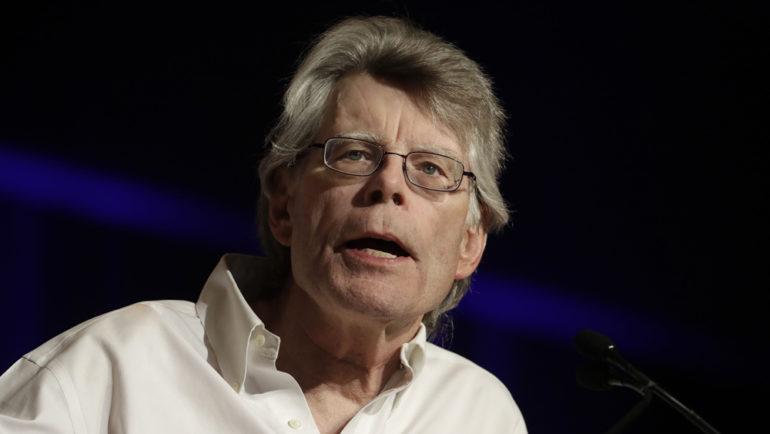Stephen King’s Origin Story
By Steven Gaydos
LOS ANGELES (Variety.com) – In the nearly half-century since author Stephen King began entertaining and simultaneously scaring the bejesus out of his countless fans around the world, filmed adaptations of his work have become so much a staple that we’re now deep into the remakes phase of his prolific output. The 2017 feature film version of King’s “It” grossed $700 million worldwide, 27 years after the creepy clown yarn had terrified TV viewers in the form of an iconic miniseries. This year, horror fans will be treated to a 30th anniversary remake of King’s classic terror tale “Pet Sematary.”
Consider this: There are currently nearly 50 King projects in various stages of production and/or development per the film and TV business-tracking site
IMDb, including: the “Shining” feature film sequel, “Doctor Sleep,” a film sequel to “It,” a third season of “Mr. Mercedes” and the second season of the King-Universe TV series, “Castle Rock.”
King was first named-checked in Variety in summer 1974 when Hollywood producer Paul Monash obtained the film rights to King’s first published novel, “Carrie,” which had just hit bookstores only weeks earlier. While a modest seller in hardback, in paperback, “” became the first of King’s many million-sellers.
Your first novel got optioned for a film soon after it was published. What was your life like when that happened?
My wife and I were living in a rented house in North Berwick, Me. We had two small children, and I was writing “Rita Hayworth and Shawshank Redemption” in a very hot barn stall, which was away from the noise and confusion. When I found out Paul Monash had optioned “Carrie,” the family celebrated by going out to McDonald’s.
What was the best thing about that time? The worst?
The best thing was Nixon resigned. The worst thing was the Vietnam War was still going on.
Who were your cultural heroes back in that time?
Dylan was important to me. Motown music. Al Green. Paul Newman. Larry McMurtry. “The Texas Chainsaw Massacre.” “The End of the Night,” by John D. MacDonald.
Was there a particular scene or group you were plugged into for support or encouragement?
I was isolated. Had no writer buddies, wasn’t part of a writing group. I left all that behind when I left college.
Did you have any mentors, fantasy, suspense or horror writers who you looked to as inspiration or compass point for your work?
Richard Matheson was my compass point when it came to horror — ordinary people that you cared about. Much later I got a note from him that said, “I’m going to give you some important advice.” Heart in my mouth, I turned the note over and read this: “Get a music stand for your copy, so you don’t throw out your neck when you rewrite.” The suspense writer who did everything right was Ira Levin. Shame he didn’t
publish more. And Robert Marasco (“Child’s Play”).
What was on your turntable that summer?
The Stones were on my turntable all the time.
Had you heard of Variety?
Yes, I knew about Variety, but thought of it as a trade mag for sharpies in a town full of them. I remember “Wall Street Lays an Egg” but it might not have come from that period. I never thought about Hollywood at all. I was interested in writing screenplays, but only as a technical exercise in condensing material.
Anyone from that time who was vitally important but who seems to have faded from the lists of major figures?
People seem to have forgotten Eldridge Cleaver.
Who would have been tops for you in terms of the “coolness” factor?
I thought Lou Reed was very cool. And John Lennon. And Dave Van Ronk.
One last question: Clapton, Page or Beck?
For guitar? Gotta be Clapton. “Layla, you got me on my knees.”

